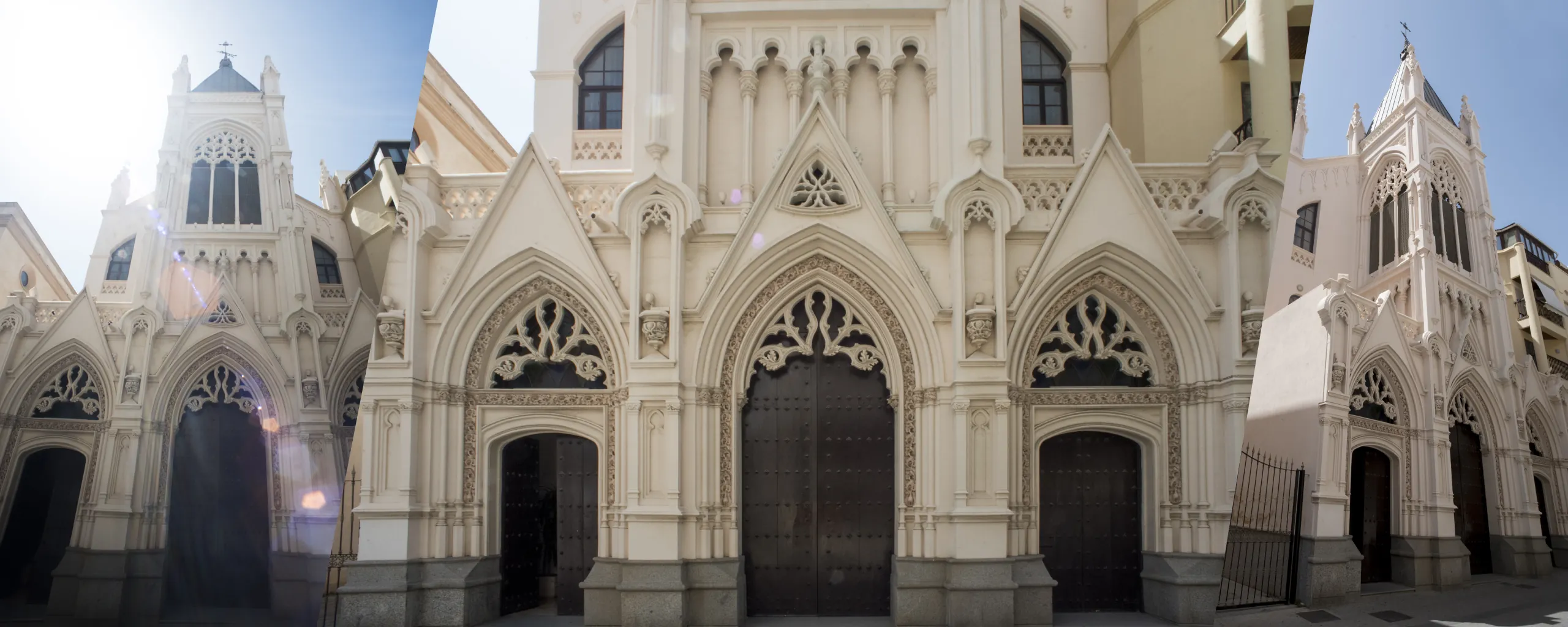La Milagrosa Church is a neo-Gothic exponent of the city of Huelva. In the mid-nineteenth century and as a reaction to the oppressive control that the Academies of Arts exercised over architecture, culture and painting, an artistic movement arose that, based on the search for the history of the nations themselves, enhancing their nationalism, turned their eyes to past artistic forms such as Romanesque, Gothic, Plateresque or Baroque. Thus was born the movement known as “historicism” of which Spain was not on the fringes. With the Bourbon Restoration in the figure of Alfonso XII in 1874, once the republican secularism was over, new relations were established between the church and the State, increasing the religiosity of the popular classes and their approach to the religious fact, so it is not surprising that it was an architecturally fruitful period with the construction of a large number of churches, convents and seminaries, and also with civil buildings that emulate past architectural sources.
In this context, “historicist” or “neo” buildings appear in the city of Huelva, as is the case of the city hall, private houses, and La Milagrosa Church, located in the central Rábida Street, which we are going to discuss.
Its style is neo-Gothic, corresponding its construction to the years 1923-1929, under the project made by José María Pérez Carasa.

Church of three naves, a central one wider and higher than the lateral naves and separated by pointed arches that start from whitewashed pillars where the ribs that make up the ribbed vault also converge, becoming from that moment on in baquetons. Between the central nave and the lateral ones, the upper floor is reminiscent of the triforiums of the medieval Gothic cathedrals.
The apse area is covered with a star-shaped vault whose ribs are joined together to form beading that runs longitudinally along the presbytery area. Located in the vault there are stained glass windows of gothic tracery decorated with religious scenes related to the apparitions of the Virgin to Saint Catherine Labouré.
The apse area is covered with a star-shaped vault whose ribs are joined together to form beading that runs longitudinally along the presbytery area. Located in the vault there are stained glass windows of gothic tracery decorated with religious scenes related to the apparitions of the Virgin to Saint Catherine Labouré.
Nuestra Señora Estrella del Mar sculpture presides over the apse, whose authorship is by Miguel Bejarano from 1997, with the following characteristics:
Seated Madonna in stewed and polychrome wood representing the iconographic theme of the Mater Amabilis, is full of naturalism both in face and clothing and sitting on his left side we have a naked Baby Jesus. In his right hand he presents a silver ship, symbol allusive to the American discovery and to the protagonism of the sailors of Huelva in that fact, but at the same time the protection that under his invocation the sailors have. The ship reproduced is the Nao Santa Maria.
Another image located in the atrium of the church is that of the Virgen Milagrosa sculpture.
The exterior of the church presents the typical elements of the Gothic style: three entrance openings corresponding to each of its naves, formed by three pointed arches with archivolts and gables in each of them. In the place that would have been occupied in the medieval style, the tympanum has been replaced, in this neo-Gothic style, by openwork tracery. In addition, on the façade we find flying buttresses and buttresses, the latter topped by their spires or pinnacles. The rose window is reduced to a triangular oculus of tracery inside the gable. The main door is crowned by the bell tower with airy openwork tracery and topped by a spire.
The church as we find it now is the result of several reconstruction projects, the first one being the one carried out by Francisco Javier Vallejo Osorno, in 1991, and another one closer in time between 1995 and 1997, also carried out by the same one.
La Milagrosa Chuch is located on Calle Rábida and can be visited during worship hours: